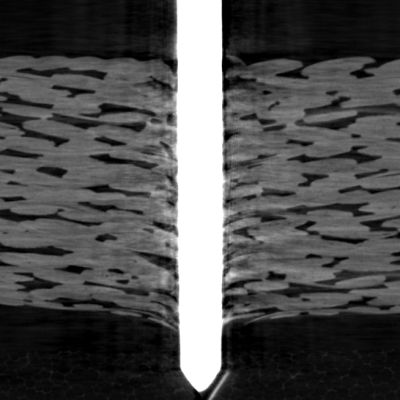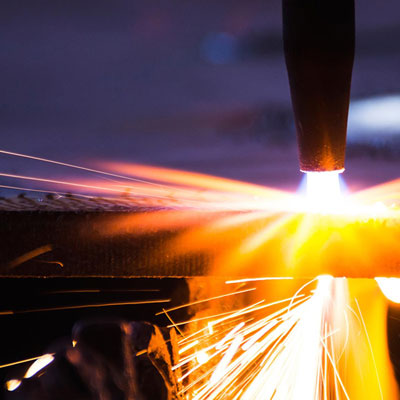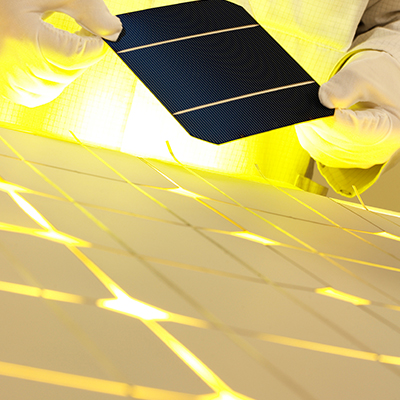The Multifunctional Composites and Through-Thickness Reinforcement research group is part of the Composites and Advanced Materials Centre at Cranfield University. The group has a broad interest in exploring the integration, evaluation and optimisation of three-dimensional multifunctionality in composite structures through hybridisation, and is especially interesting where hybridisation can be implemented using composite through-thickness reinforcement techniques.
Ambitious ‘Net Zero’ by 2050 targets are driving the expansion of composite applications as these materials are seen as an essential enabling technology for decarbonisation. Embedding multifunctionality is key to achieving this and is motivated by composites’ lack of functional properties (e.g. conductivity), inherent in legacy materials like metals.
The research group is focused on multi-disciplinary activities across different sectors and technology readiness levels, including multi-material and multi-scale approaches for design, manufacturing and assessment of high-performance multifunctional polymer composite materials and structures.
Our approach to through-thickness reinforcement (TTR) includes the application of established methods, like tufting, stitching and z-pinning, but also includes more novel methods like static insertion which is capable of integrating much larger reinforcement geometries. We are interested in developing novel bespoke processes to embed TTR elements, and on using a combination of these methods to affect significant functional property improvements in composites.
Research interests
Our research capitalises on Cranfield’s existing unique capabilities, like through-thickness reinforcement of composites and sustainable manufacturing, but also contributes to developing new capabilities.
- Evaluation and optimisation of in-service multifunctional performance, e.g. energy transfer, energy storage, sensing and structural health monitoring.
- Imparting of self-healing and self-repair capabilities from the exploitation of self-heating or mechanical excitation.
- Improving disassembly and recycling potential of composites by exploiting the implications of hybridising materials.
- Achieving significant z-directional multifunctionality by the incorporation of hybridisation elements using through-thickness reinforcement technologies.
- Use of through-thickness reinforcement to improve forming/manufacturing control and quality e.g., tow deformation control or joining with a view to improved structural performance.
- Manufacturing and evaluation of non-oxide ceramic matrix composites including carbon-carbon and silicon carbide composites.
Funding
Our funders include:
- Royal Academy of Engineering
- Higher Education Innovation Fund (HEIF)
- Cranfield Innovation Fund
- Cranfield Global Research Fund
- Future Frontiers Fund – Green Future Investments Ltd (GFIL)
Current projects
Public engagement
Dr Geoffrey Neale, Royal Academy of Engineering Research Fellow and Lecturer, tells us about his work with composite materials and how they will help us move towards a Net Zero future.
We have a really big push within the centre of functional materials for hydrogen storage and transport. Hear more from Dr Geoff Neale here: Is this the powerhouse fuel of the future…? The Royal Society.
What are your thoughts on the UK’s research and innovation policy landscape? Watch Dr Geoff Neale discuss this alongside a panel of industrial experts at the session on 'Open Collaboration in a Volatile World'.
Facilities
In addition to a range of bespoke equipment that allow us incredible flexibility in our approach, we also make extensive use of the following facilities:
- Composites and Advanced Materials Centre – pilot-scale composites manufacturing and analysis facility covering a wide range of materials classes.
- THERMMAT – state-of-the-art facility for extensive thermomechanical analysis of advanced materials.
- Mechanical testing lab – wide range of equipment for studying the mechanical behaviour of components and material samples, using destructive and non-destructive methods.
- Microscopy – a range of optical and electron microscopes with extensive preparation facilities that enable investigations of a wide variety of samples.
Working with us
The Composites and Advanced Materials Centre (CAMC) has strong composite manufacturing evaluation competencies and is a core partner in the strategic EPSRC Centre for Innovative Manufacturing in Composites (CIMComp). We are one of the few university centres with in-house tufting, z-pinning and static insertion facilities. We have laboratories dedicated to composite manufacturing, functional/mechanical characterisation. Cranfield University maintains an intimate research environment with evident strengths and facilities that support the investigations targeted by this group, along with a strong reputation for industrial engagement.
We are open to academic, industrial and governmental collaboration on projects with varied applications. Get in touch if you’d like to start a conversation with us about working together.






